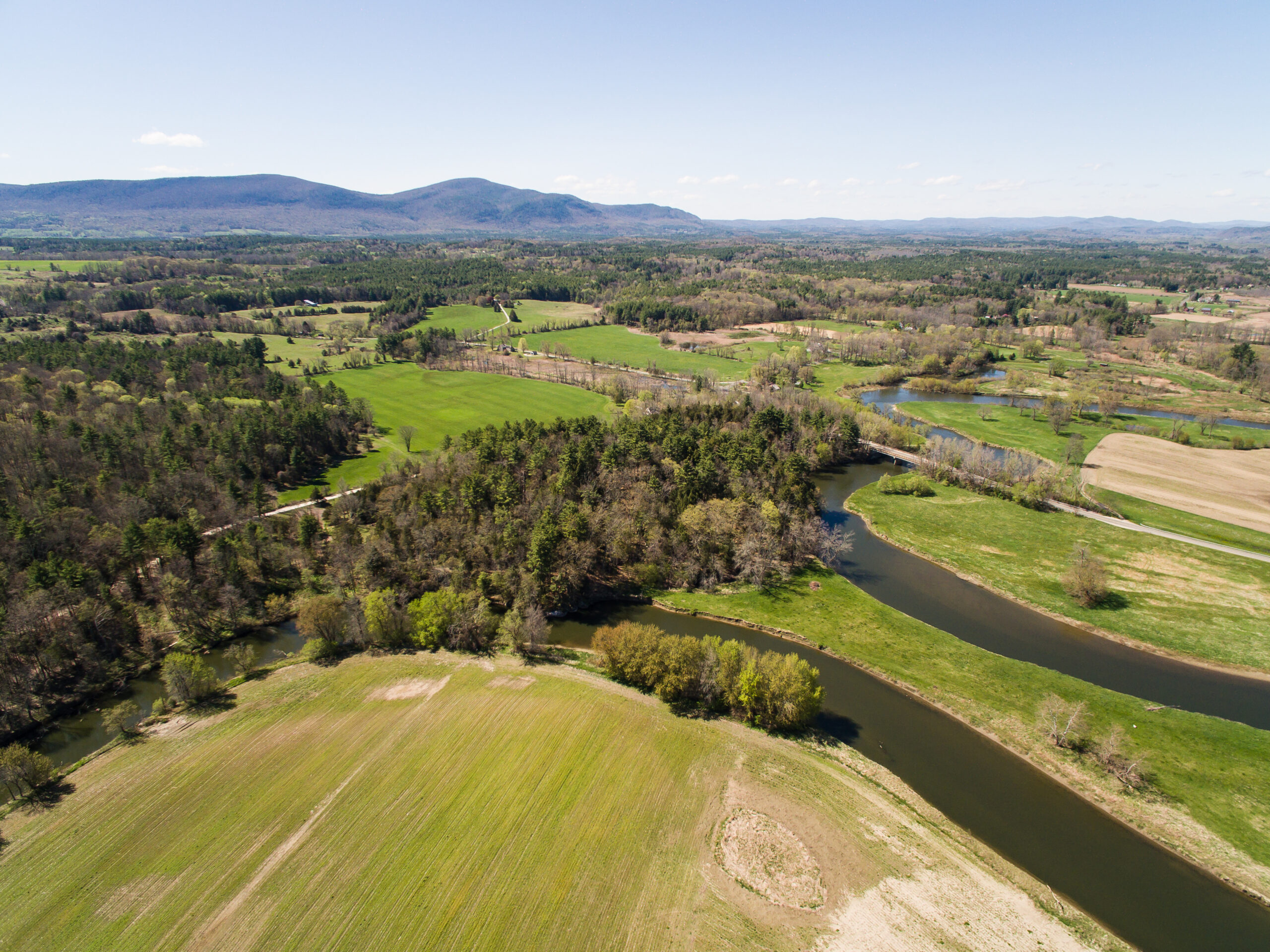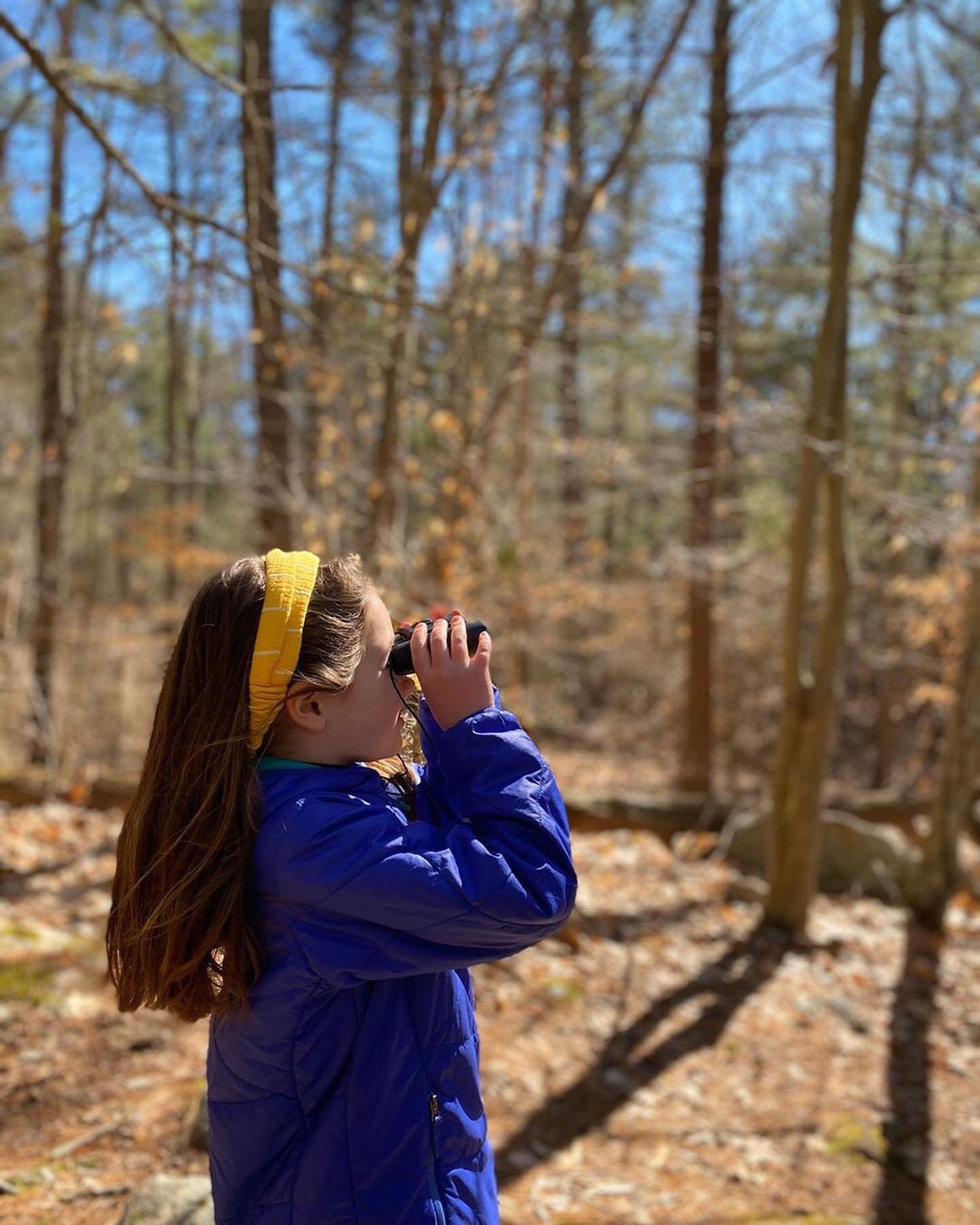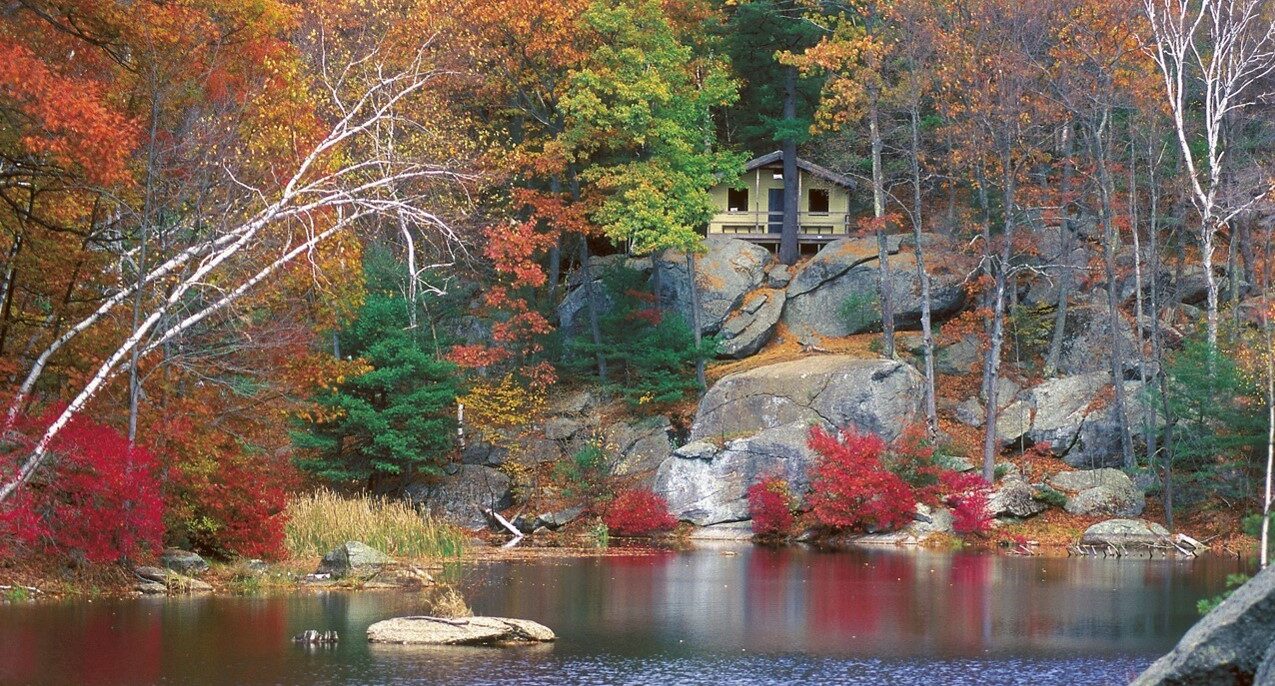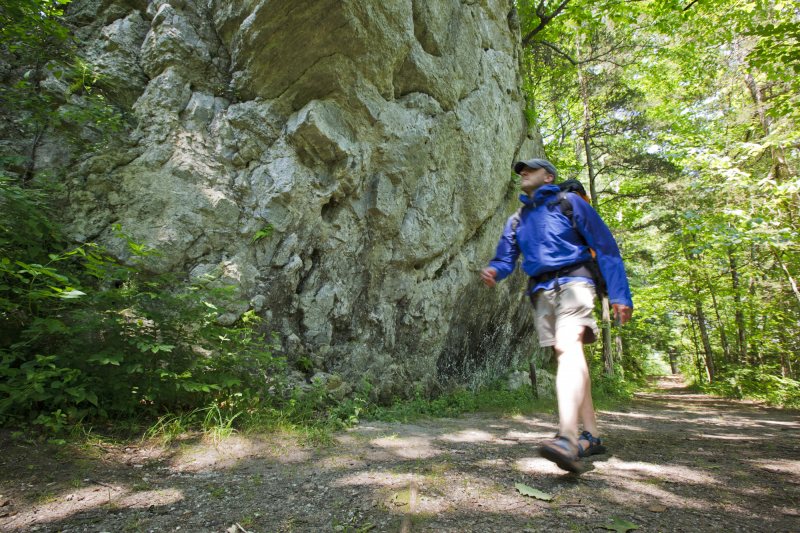Trustees Quest
Rock House Reservation
Congratulations! You’ve found the Rock House Quest.
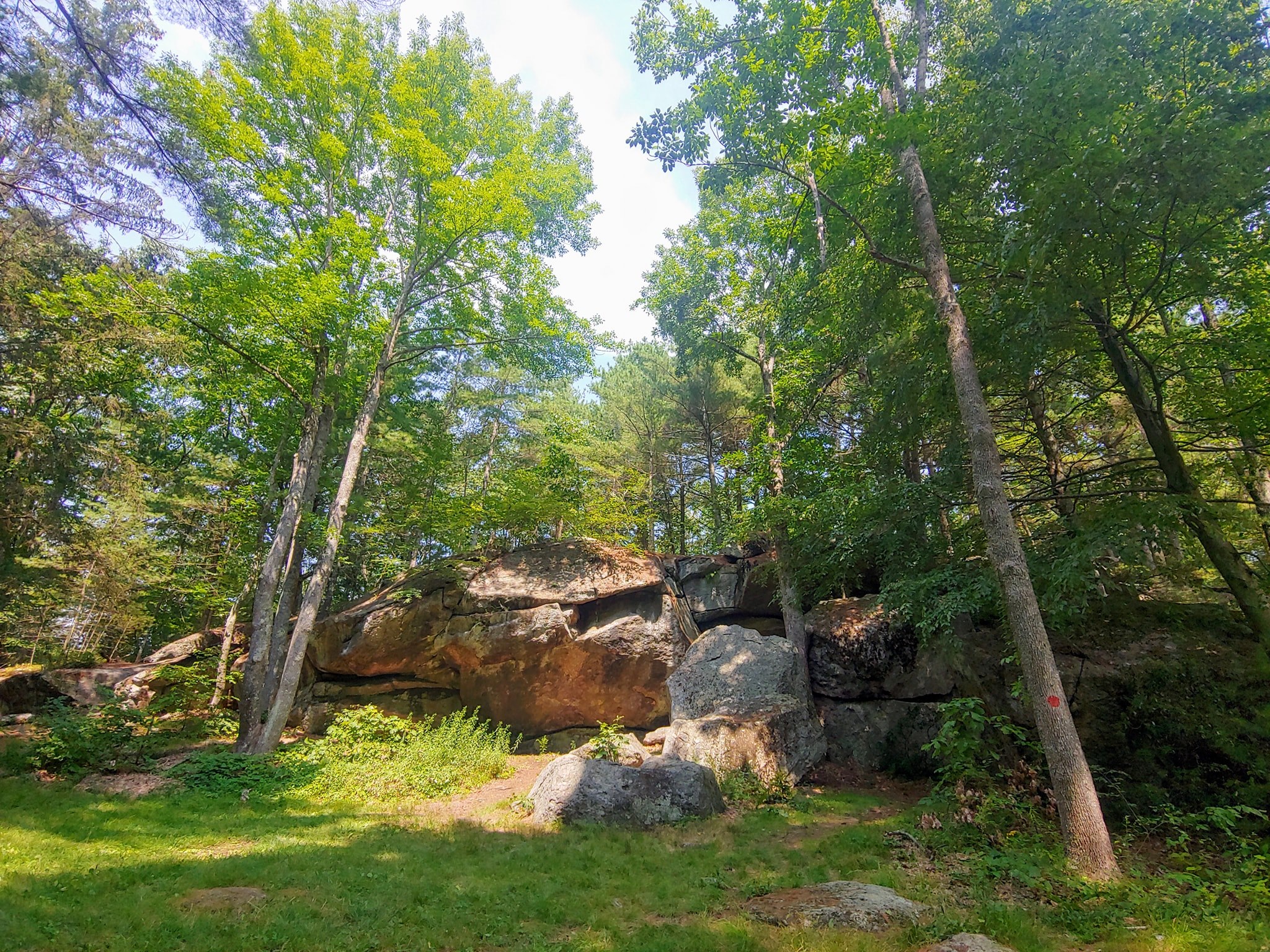
Photo by Jamie Cheah
You are standing in front of “Balance Rock,” which was formed by the movements of glaciers more than 10,000 years ago! These large sheets of ice once pushed, pulled, and scraped over New England, forming the landscape and leaving behind boulders in unexpected places.
There’s more to do and see! Keep scrolling…
- Activity Ideas
- Explore More
- History Tidbits
- Property Map
Activity Ideas
This is a great place to be a rockhound. Using a magnifying lens examine the rocks up close. Can you see specks of crystals? How about minerals? What colors or shades of gray do you see? What kinds of rocks do you think these are? Metamorphic, igneous, or sedimentary? At the top look for long scrape marks in the rocks. These are evidence of the glaciers moving through. At the base of the large rock explore the different nooks and crannies. What kinds of plants are growing out of the cracks? How do you think they came to be there?
Look for moss and lichens living on the rocks. These are fascinating to look at up close using your magnifying lens. Can you find the lichen that is known as Rock Tripe?
Sit quietly and observe – what do hear, see, smell, or feel? How does this compare with other Trustees Quest sites you’ve visited? What are you experiencing that you don’t where you live?
Explore More
From Balance Rock head over to the Trailside Cabin for a view of the pond and to learn more about the geology of this area.
As you hike back can you find the Rock this reservation was named for? Rock House’s large size and position – facing south so that it was naturally warmed by the sun during the day – made it an excellent winter camp for Native Americans.
How many boulders and rock outcrops can you discover around this property? There are plenty to scramble around, in, and among the three miles of trails and woods roads.
Spot the 20- to-30-foot high rock enclosure standing guard over Carter Pond. Do you see any wildlife in or around the pond?
How many of these things can you spot and check off the list? Wildflowers, hardwood forests, pine groves, wild turkeys, beavers, and turtles.
History Tidbits
The forests you stand in today were once cleared for farming in the mid-17th Century. From 1910-1920, an electric trolley passed through here, and Rock House was a popular stop for passengers taking the trolley’s “Copper Line,” which ran between West Brookfield and Ware. Visitors came to picnic in the abandoned pastures and explore this historic Native American landmark. This site is also near the birthplace of Lucy Stone, a prominent speaker for the rights of women who helped organize the first National Women’s Rights Convention in 1850.
